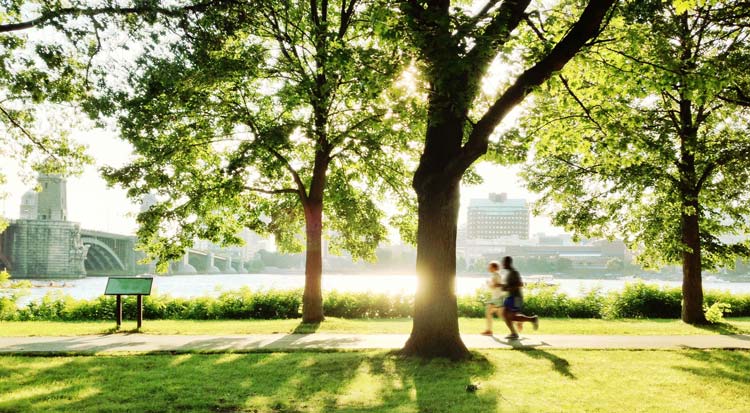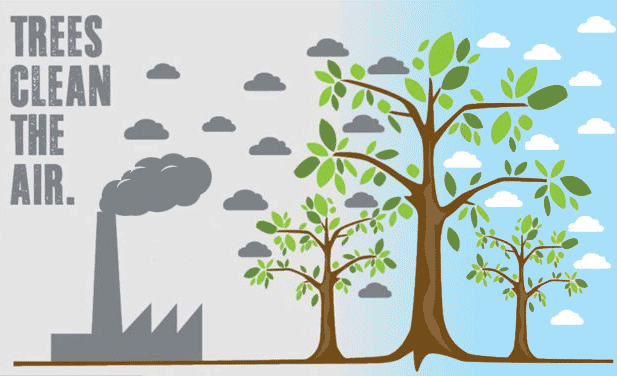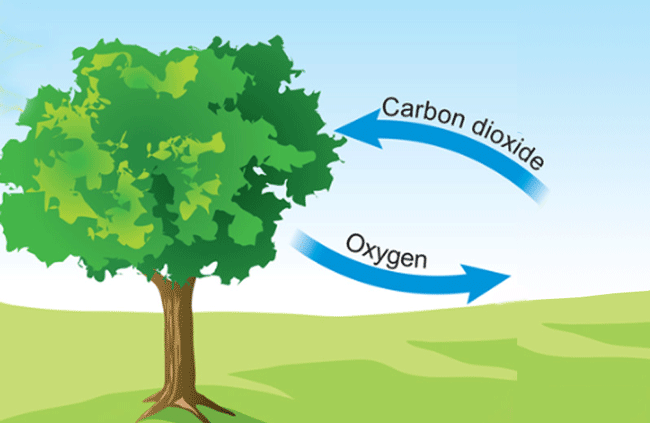It’s widely known that trees play a crucial role in our planet’s ecosystem, and without them, our existence would be impossible.
From fighting climate change, naturally cooling our cities, providing food and shelter, and conserving energy, trees add so much to our modern urban environment that we would find it impossible to live without them.
In this article, we look at how trees enhance our lives in some obvious and not-so-obvious ways.

What we cover
ToggleWhy do we need trees?
If you are wondering why we can’t survive without trees, let us go through some of the reasons why we need them.
Trees fight climate change
Climate change is one of the biggest environmental challenges that many nations, societies, and people face. Climate change affects the daily weather patterns1 that impact not only normal food production2 , but also sea-level variations, plant life, and many other unbearable effects.
Luckily, trees offer a means to reduce harmful gases in our atmosphere. Trees are natural carbon eaters and are energy savers.
Improve the quality of air
Trees improve our breathable air by absorbing pollutant gases such as ammonia, nitrogen, sulfur dioxide, and Co2.
These gases pollute the atmosphere while trees filter and clean the air3 keeping our environment livable. Without trees storing carbon and other gases, we would have a runaway greenhouse effect that would quickly make the earth unlivable.

Conserve Energy
Trees help cool our homes by providing shade during summer months and act as a windbreak during winter which reduces heating and air conditioning costs.
Save Water
Tree leaves and bark store water. Some of the water goes into the soil and can be released into the atmosphere via transpiration. The opposite of a forest is a desert. In a desert environment, there is little rain and nowhere for the water to be stored. Trees use water for their metabolic processes and as a part of that release it into the atmosphere. The vapor then condenses and creates rain clouds and the cycle continues.
Prevent soil erosion
Trees are always sturdy and will hold soil in place in the event of heavy rainfall especially if it is running on a stream slope or hillside. It is well documented that in places such as Spain and China where trees have been completely removed from areas to build towns and cities, flooding and landslides are a constant threat.
Provide food and habitat
Trees are a great source of different forms of food, such as fruits, leaves, roots, nuts, and tree bark. Wildlife birds and animals also feed and sleep on trees.
Mental health & well-being
Exposure to trees can also relax the mind and reduce mental fatigue. Studies4 have shown that cities make us depressed, but green spaces can quickly elevate stress and literally make us happy. Just 10 minutes of walking through a green space can cut stress levels by 70%.
Provide Wood
Trees are harvested not only in rural areas but also in the suburbs for fuel or timber for building materials. Timber is still used today for frames in homes and wooden flooring as well as in furniture.
Increase the value of property
If you are looking for a way to increase the value of your property, trees can be the best option to go for. Home buyers love the beauty of trees in a property they are interested in especially if they are well-maintained.
Other benefits of trees?
There are many benefits of planting trees, but to have a clear glimpse and to understand your need to plant trees in your backyard or forestry, these are the specifics.
Health benefits
Trees offer a host of health benefits. They provide clean air for breathing. Trees release oxygen and absorb poisonous gases. Exposure to trees is also great for stress relief and sound sleep. Cutting down trees is also associated with a rise in infections and a high rate of mortality.
Social benefits
Planting trees also presents notable social benefits that no one should ignore or deride. Planting trees brings together communities and builds much-needed community unity and spirit.
Indoor and outdoor gardening presents humans with an opportunity to get into contact with trees and other vegetation.
Air quality
Trees help improve the quality of the air we breathe. Trees absorb carbon dioxide and other gases polluting the environment and releasing oxygen into a clean atmosphere.
Trees also help reduce the effects of the greenhouse by providing shade. Planting trees is a cost-effective way to reduce excess carbon dioxide in the atmosphere and keep the air we breathe less harmful.

Wildlife
Trees benefit wildlife by providing food and shelter. Small animals and birds depend on trees as their best habitat. Tiny microorganisms feed on dead and decaying trees. Tree leaves, bark, nuts, flowers, and fruits are immense sources of food for wildlife.
Environment
Planting trees helps reduce climate change and purify the air we breathe. Trees are also great for air conditioning, especially when planted in a backyard. Trees also save water thanks to the shade they provide and aid in transpiration.
Why we should have more trees in urban areas
We need many trees in urban cities worldwide. Planting trees plays a great role in increasing urban biodiversity. Many cities are full of industries that release pollutant gases, and it is wise to plant a lot of trees to absorb these gases and release clean oxygen gas for breathing.
Trees also play great roles in climate change moderation. Climate change is a global disaster, and planting trees in urban cities offers a means to reduce the effects of climate change. Strategic tree planting can also help cool the hot air in populated and polluted urban towns.
If you want to increase the value of your urban property, planting trees offers a cost-effective means to enjoy a huge return on investment, especially after your property’s sale. The natural beauty of trees can also be a key attraction to property buyers and tourists to urban parks.
Resource: How to plant a tree
Why its important to plant more trees
Trees have a significant impact on the environment. Our forests have disappeared due to deforestation and this even leads to a reduction in wildlife.
The oxygen we breathe comes from trees and it is wise to plant more trees for better and clean air in the atmosphere.
80% of terrestrial biodiversity is made up of trees, and it is wise to keep the numbers high. With many diseases affecting millions of people on a daily basis, it is best to plant different types of trees as a source of medicine.
Why do we cut down so many trees?
Many people cut down trees for different reasons. For instance, there are those who cut trees to build houses, or as a source of wood.
There are people who cut down trees to get enough space for agricultural use or to erect large industrial buildings. In the Western world, there is not a lot of forest clearing, well at least not at the scale of some other countries like Brazil and Guatemala for farming.
We tend to plant trees for harvesting at a later date and then replant. As trees are removed in small cells and other established trees are left, it has minimal impact on animals or the local climate.
Should I plant more trees In my yard?
It is a great idea to plant trees in your backyard. In fact, trees are an important part of your residential landscaping ideas or investments. Trees increase not only the aesthetic value of your home but also its general look.
Trees also reduce energy costs at home as they offer a natural means of air conditioning. Trees in your backyard will also increase the privacy of your home. You can also grow trees that provide fruits, flowers, and nuts, especially if you want to improve food security in your home and locality.
Tree planting initiatives
Many a time, it is wise to encourage people to plant more trees. This can be a realistic undertaking if you come up with effective tree-planting initiatives. Notable initiatives include:
- Plant a Billion Trees5 – A tree planting initiative by the United States government
- 100 Million Tree-Planting – An initiative started by Arbor Day Foundation
- 50 Million for Our Forest6 – An effort by the National Forest Foundation
Are dead trees still beneficial?
Trees are still relevant even when they die. They keep providing ecological benefits such as storing carbon, and their roots hold the soil firmly.
Dead trees are also critical habitats for many creatures and provide them with food. These also add important nutrients to the soil when they decompose and act as a resting place for many species of fungi that help increase nutrient content.
To sum up
With the many benefits of trees, it is wise to look for ways to increase the number of trees globally. We should also protect and conserve trees as well as spur every generation to plant trees.
How can we save more trees?
Trees build a great relationship between humans and nature. It is wise at all times to come up with practical ways to save trees.
For instance;
- We can all start by planting more trees at the same time to prevent excessive cutting down of trees.
- We can use our backyards to grow fruit or other valuable trees.
- Because trees are used to make paper, we can also reduce the use of paper and opt for reusable and more reliable materials or technologies.
- Trees are typically cut down for wood and reducing the use of disposable wood material can be a better way to save trees.
It is also wise to impose strict government rules and regulations regarding the cutting down of trees. Rules should be set to push institutions, homeowners, and state officials to plant more trees on a yearly basis.
Despite the many benefits of trees, there are a few disadvantages of trees if planted in the wrong places. For instance, tall trees can fall on buildings or electricity lines and cause unimaginable damage or fatality.
Are there any disadvantages of trees?
Tall and strong tree roots can also penetrate into buildings’ foundations and pose a threat to the building and occupants. Trees near houses can also be homes of dangerous insects that can pose a danger to the occupants.
- Environmental Protection Agency, (2023) Climate Change Indicators: Weather and Climate. <https://www.epa.gov/climate-indicators/weather-climate> Accessed: 07-03-2024
- Magdi Ahmed, (2017) Climate Change Effects on Food Security. <https://forbes5.pitt.edu/article/climate-change-effects-food-security> Accessed: 07-03-2024
- EcoAsia Blog, (2019) How trees reduce air pollution. <https://blog.ecosia.org/how-trees-reduce-air-pollution-world-environment-day/> Accessed: 07-03-2024
- Tsai WL, McHale MR, Jennings V, Marquet O, Hipp JA, Leung YF, Floyd MF, (2018) Relationships between Characteristics of Urban Green Land Cover and Mental Health in U.S. Metropolitan Areas. <https://www.ncbi.nlm.nih.gov/pmc/articles/PMC5858409/> Accessed: 07-03-2024
- Kim Honan and Melissa Martin, (2019) A billion trees planted by 2030? It can’t be done, forestry industry says. <https://www.abc.net.au/news/rural/2019-05-02/call-for-removal-of-forest-water-rule/11061870> Accessed: 07-03-2024
- National Forest Foundation, (2018) National Forest Foundation launches ambitious effort to plant 50 million trees. <https://www.nationalforests.org/who-we-are/press-news/plant-50-million-trees> Accessed: 07-03-2024



